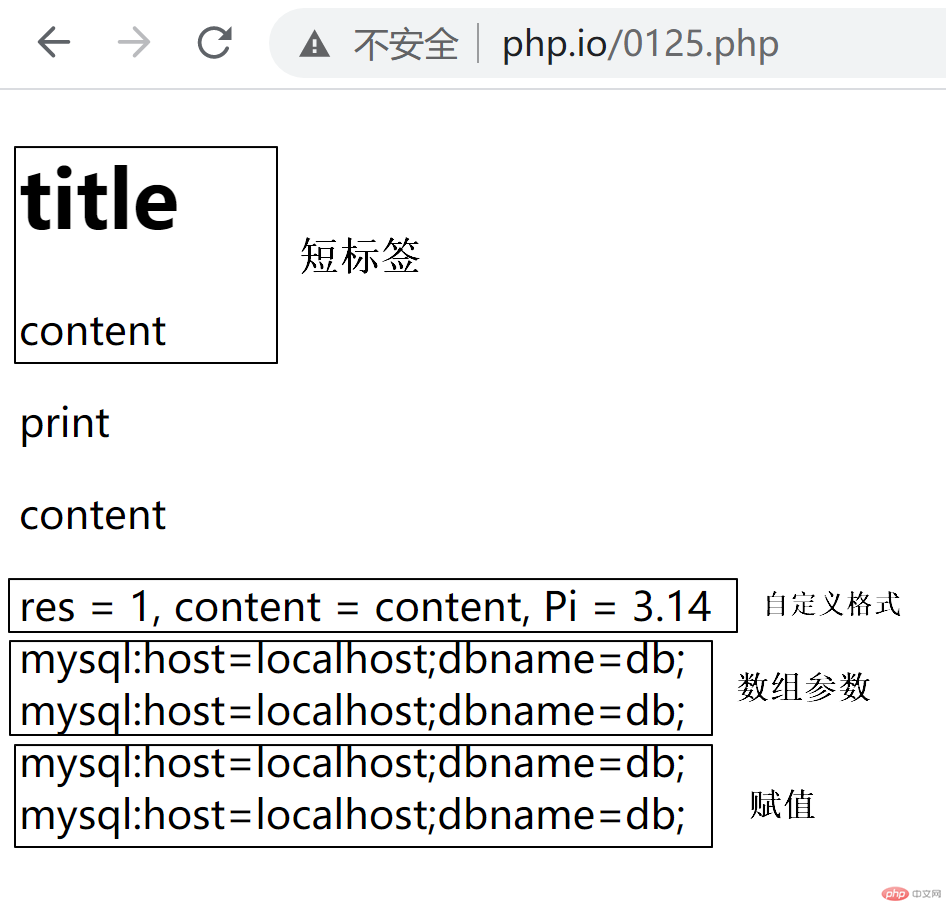Correction status:qualified
Teacher's comments:



- 使用任何一种喜欢的集成工具,将本地的php开发环境创建成功,并创建一个虚拟主机,域名自己定;
- 深刻理解php程序的运行原理,并写出具体的步骤;
- 将php与html混编的方式与短标签的使用;
- 将常用的数据类型,全部实例演示,尽可能不要抄教学代码… 试试看,相信自己


若是静态文件 html, css, js,服务器软件 Apache | Nginx 或 其它服务器软件,找到静态资源后,直接返回到客户端。
若是 php 文件,服务器软件 Apache | Nginx 或 其它服务器软件,查找能解析 php 的软件,生成 html 静态后,交给服务器软件,返回到客户端。
<?php// 变量赋值$content = '<p>content</p>';?><!-- 短标签 --><?='<h1>title</h1>'?><?=$content?><?php// print 有返回值// 输出 content 后,$res = 1$res = print('print'. $content);/*自定义格式输出%d 整数%s 字符串%f 小数*/printf("res = %d, content = %s, Pi = %.2f\n", $res, strip_tags($content), 3.14);// 接受数组参数输出$prams = ['mysql', 'localhost', 'db'];printf("%s:host=%s;dbname=%s;\n", ...$prams);vprintf("%s:host=%s;dbname=%s;\n", $prams);// 赋值$dsn_p = sprintf("%s:host=%s;dbname=%s;", ...$prams);$dsn_vp = vsprintf("%s:host=%s;dbname=%s;", $prams);echo $dsn_p, "\n", $dsn_vp;?>

<?php// 布尔$p1 = gettype(true);// 字符串$p2 = 'hello \'PHP!\'';// 数值// 八进制$n1 = 071070;// 十六进制$n2 = 0xabba;// 二进制$n3 = 0b10010;// 整数$n4 = 2e2;// 浮点数$pi = 3.14;printf("<br /></br />p1: %s<br />p2 = %s<br />n1 = %d<br />n2 = %d<br />n3 = %d<br />n4 = %d<br />pi = %.2f", $p1, $p2, $n1, $n2, $n3, $n4, $pi);?>

<?php// 数组// 索引数组$arr1 = [1, 2, 'sum'];// 关联数组$arr2 = ['a' => 1, 'b' => 2, 'c' => 'sum'];// 对象class Demo {// 私有属性(变量)private $a = 1;private $b = 2;// 公开方法(函数)public function sum($pram) {return sprintf('%s = %d + %d = %d', $pram, $this->a, $this->b, $this->a + $this->b);}}// 对象实例$obj = new Demo();// 调用对象方法$sum = $obj->sum('total');echo "<pre>". print_r($arr1, true) ."</pre>\n", "<pre>". print_r($arr2, true) ."</pre>\n", $sum;?>
